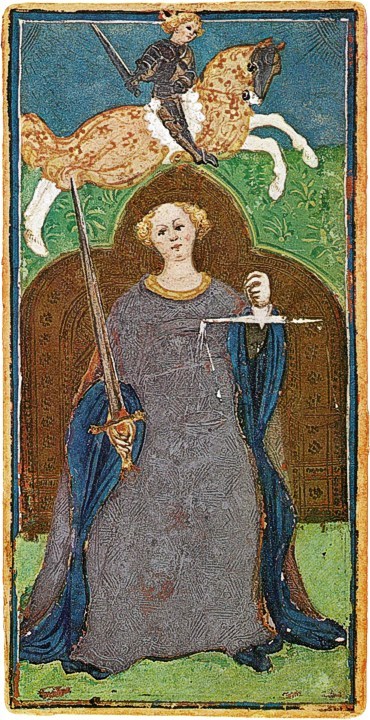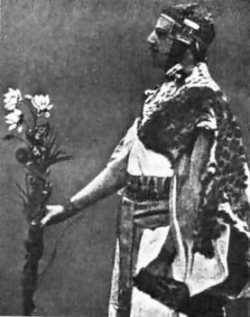Tarot Cards and the Hermetic Order of the Golden Dawn
Where did Tarot come from?
The first known deck of tarot-like cards, commonly referred to as the Visconti-Sforza Tarot, surfaced in Milan,Italy in the mid fifteenth century. These cards were the first to contain trump, or triumph cards along with the regular four-suite deck, totalling in seventy eight cards. Other decks containing trumps were developed later in the fifteenth century, such as the Tarot of Marseilles, and spread quickly from northern Italy to the rest of Europe.^{1} Although the common belief among esoterics is that cartomancy began with the creation of these trump cards, there is no documented connection between the cards and divination until late eighteenth century France.^{2} Throughout the eighteenth and nineteenth centuries, associations between tarot and divination became much more apparent, concurrent to the arising of secret occult societies such as the Hermetic Order of the Golden Dawn,^{3} whose ideas will be a focal point of this exhibit.
The Hermetic Order of the Golden Dawn
The Hermetic Order of the Golden Dawn was a secret occultist organization originating in London in 1887, and was abolished in 1903. Their beliefs were rather expansive, taking inspiration from numerous different religions and incorporating particularly strange esoteric rituals to establish their own amalgamated ideology. The Golden Dawn followers believed that their goal was to traverse through the layers of reality to eventually reach a kind of enlightenment, where they would then be operating at a consciousness akin to angels. There were ten of these layers that one would pass through to gain enlightenment. They were referred to as grades; one would graduate to the next once a certain set of rituals were finished. In order to achieve this enlightenment and move through the grades, the Order believed that the initiate, or “magician” must manipulate their consciousness through imagination and psychic events. This framework of an Golden Dawn initiate’s journey to enlightenment was The Kabbalah, a mystical system of Jewish origin that contained many interconnected symbols which was meant to guide one to enlightenment in their trances.^{4} Symbols were numerous within the Golden Dawn, as they heavily utlized astrological symbols, elemental symbols, Hebrew text, Sanskrit text, Christian imagery and much more as necessary material to learn for an initiate to move forward in their journey.^{5} Such symbolism transferred over into the Rider-Waite-Smith tarot deck, one of the most recognizable legacies left by the now defunct Golden Dawn.

